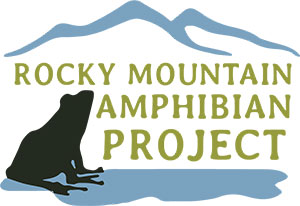UW Biodiversity Institute to Host Rocky Mountain Amphibian Project Training May 10
Published May 08, 2025
 For those interested in helping track various amphibian populations in the Rocky Mountain
region, the University of Wyoming’s Biodiversity Institute will host a training session
for community scientists Saturday, May 10.
For those interested in helping track various amphibian populations in the Rocky Mountain
region, the University of Wyoming’s Biodiversity Institute will host a training session
for community scientists Saturday, May 10.
The training, for the Rocky Mountain Amphibian Project, will take place from 10 a.m.-noon near the Blair picnic site in the Happy Jack/Vedauwoo area.
The Rocky Mountain Amphibian Project has been a community science project since 2014 and is one of the only long-term monitoring programs for amphibians in the state. It is a partnership of federal and state agencies, academic institutions, nonprofit organizations and citizen scientists dedicated to collecting data on amphibians in the Rocky Mountain region in a standardized manner.
“Amphibians are in decline across the world due to a number of factors, and we have had native species in Wyoming that have declined significantly, such as the Wyoming toad,” says Mason Lee, senior project coordinator in the Biodiversity Institute. “This project specifically monitors the more montane wetland species, such as northern leopard frogs, boreal chorus frogs, wood frogs, Western toads and Columbia spotted frogs. Our state amphibian is the tiger salamander, and they also are found at some of these Rocky Mountain Amphibian Project sites.”
The UW Biodiversity Institute has sites available in three Wyoming national forests -- Medicine Bow, Routt and Bridger-Teton. Ideally, Lee says there will be enough volunteer teams to monitor each of the catchments. There are 18 catchments in the Medicine Bow National Forest; 36 in Bridger-Teton in northwest Wyoming; and 15 in Routt National Forest in northern Colorado.
Some of the catchments can be difficult to access and monitor due to uneven terrain, downed trees, thick willows and wildlife, including moose in all three national forests as well as grizzly bears in Bridger-Teton. So, volunteers should be prepared for conditions, Lee says.
Volunteer teams monitor their catchment twice -- in June and July -- during the summer breeding season. Volunteers record the species that they observe, as well as weather and environmental data. If volunteers catch any amphibians, they also can collect skin samples for disease monitoring.
“Their data is used by researchers at the University of Wyoming and the Wyoming Game and Fish Department to monitor the populations, Lee says. “One paper using this community science-generated data has already been published and, I believe, two more papers on amphibian occupancy of these sites are in the works.”
To read the paper that was published in Ecological Indicators -- to which Lee was a contributing writer -- go here.
For more information about the Rocky Mountain Amphibian Project, go to http://wyomingbiodiversity.org/index.php/community-science/rocky-mountain-amphibian-project or email Lee at mlee37@uwyo.edu.
About the University of Wyoming Biodiversity Institute
The UW Biodiversity Institute fosters conservation of biodiversity through scientific discovery, creative dissemination, education and public engagement. In this setting, scientists, citizens, students and educators come together to share a wealth of perspectives on the study and appreciation of biodiversity -- from microbes to poetry and ecosystems to economics. For more information, go to www.wyomingbiodiversity.org.

